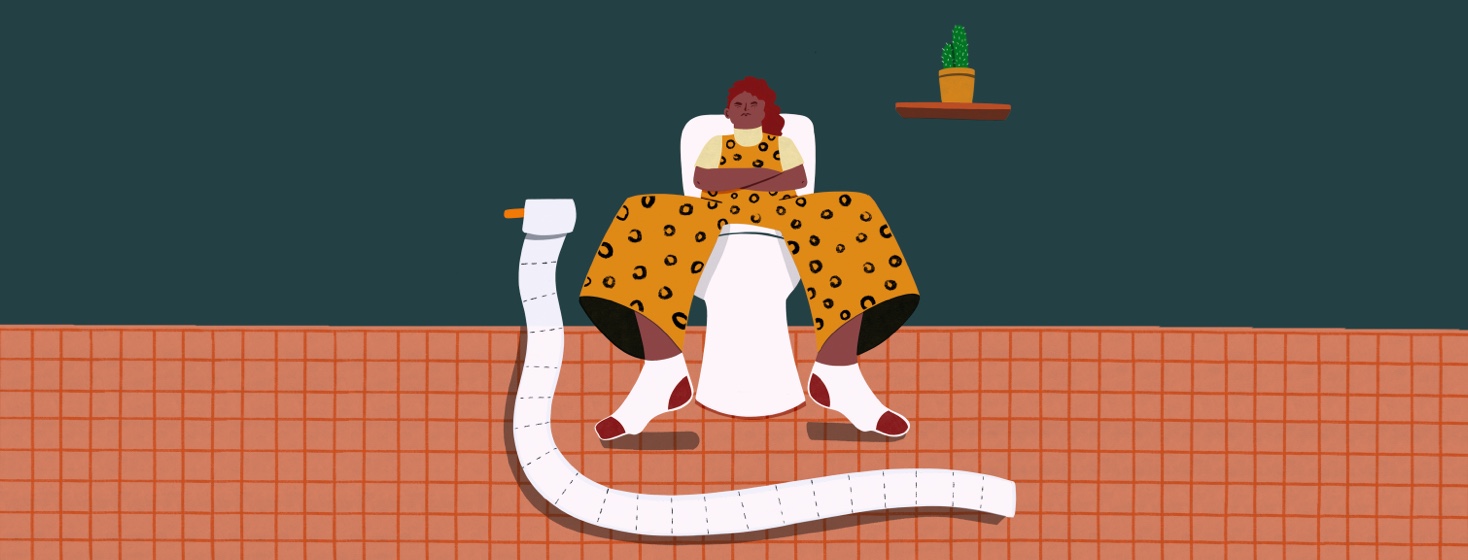Why Using a Urinary Catheter Can Cause Constipation and What to Do About It
I work as a pelvic floor physical therapist and I treat a lot of patients who rely on catheters to void urine. For many people with neurogenic bladders, the use of urinary catheters is necessary to prevent urinary retention which can lead to chronic infections in the bladder and kidney disease. Many of those diagnosed with multiple sclerosis use catheters for everyday living.
The link between urinary catheters and constipation
There can be a link between prolonged use of intermittent or permanent urinary catheters and constipation. The reason for this can be explained by anatomy. The bony pelvis holds the organs of elimination – the bladder for urine and the rectum for stool. In order to void either liquids or solids, the pelvic floor or saddle muscles of the body must open up and relax. When we need to pee, our pelvic floors open to allow the bladder to descend so that that it empties completely. When we need to poop, these same muscles are required to open up so that stool can pass.1
The lack of pelvic floor muscle utilization
Now let’s look at people who rely on a urinary catheter to pee. Because there is a tube entering the urethra to assist urine from exiting the bladder, the pelvic floor muscles don’t have to lengthen and open for urination to take place. It makes sense that the tissues of the pelvic floor might become less mobile if it isn’t necessary for them to open up several times daily for peeing purposes. All of this is well and good from a urinary perspective, as the goal is to ensure that urine doesn’t linger in the bladder or fluid doesn’t back up into the kidneys and cause trouble.1
The impact on bowel movements
But let’s remember that these pelvic floor muscles must open up for regular bowel movements, too. Someone using a urinary catheter isn’t opening up these muscles to pee; therefore, it stands to reason that the muscles might get shorter over time. And the pelvic floor muscles have to open for complete bowel movements to occur. The result can be that the person who routinely caths to pee may now find it more difficult and/or painful to pass stool. Constipation may then become the norm in this situation. Which is NOT ideal!1
What can I do about constipation?
What can be done to remedy this situation, you might be asking? A nice place to begin would be to allow the pelvic floor muscles to stretch as though urination without a catheter was happening. This means sitting on the toilet or commode for several minutes each day and to breathe into the belly. Next, imagine your pelvic floor muscles opening up and blooming like a flower into the toilet bowl or commode basin. Even if you are not actually voiding urine, you will remind your muscles of how they once lengthened for this basic function.
Additional tips
If you have a permanent catheter, you can still sit on the toilet and perform this activity. If you utilize intermittent catheterization, you can perform this after you are finished cathing and allow your bladder to descend and relax. Deep breathing is the key. As you inhale, send the air into your lower abdomen and allow it to balloon out. Let your belly feel round and don’t suck it in!
How does this exercise work?
And how will this impact constipation, you might ask? Well, this mechanism of lengthening the pelvic floor muscles to pee is the same thing that occurs with a bowel movement. Therefore, if the muscles responsible for both activities are still doing the job they once did, then natural and complete bowel movements can be restored. This is akin to performing a stretch to any muscle in your body. If a muscle is tight and contracted, it needs to be stretched for optimal use of that muscle. The same is true in this case.
The pelvic floor, in review
To review, the pelvic floor or saddle muscles are responsible for the complete voiding of the bowel and bladder. When catheters are used to assist in urination, the typical motion of the pelvic floor muscles is often forgotten. This can then result in tightened muscles which can prevent regular bowel movements. The solution may be to restore the optimal length of the pelvic floor muscles by sitting on the toilet or commode for several minutes, breathing deep into the belly, and allowing the pelvic floor muscles to relax, lengthen and do what it is that they are supposed to do.

Join the conversation